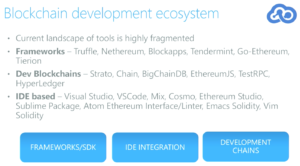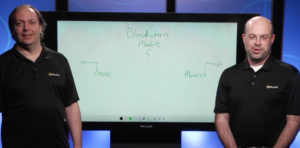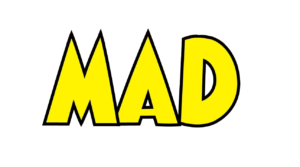
Microsoft Virtual Academy (MVA) has recently published a Blockchain as a Service (BaaS) training course which is worth a look. It talks about Ethereum, solidity, smart contracts and the devops process for blockchain development. It naturally has a Microsoft Azure bias which is helpful in understanding what Microsoft offers
The presentation format and MVA portal is very similar to that of the Princeton University course with transcripts, forums, a progress bar and course information and covers 5 modules.
- Distributed Ledgers 101 – 48 mins (3 videos)
- Smart Contracts Explained – 40 mins (3 videos)
- Decentralized Applications and Architecture – 35 mins (3 videos)
- DevOps for Blockchains on Azure 5 – 46 mins (3 videos)
- Development of Decentralized Applications – 44 mins (4 videos)
The presenters were Cale Teeter and Derek Martin. Links to the course:
- https://mva.microsoft.com/en-US/training-courses/microsoft-blockchain-as-a-service-17104
- https://mva.microsoft.com/ (keyword search: Blockchain)
What was good about the course?
- The course was well organised and structured.
- The demo at the end of each course was helpful in terms of seeing what could be done in Microsoft Azure.
- Module 4 on devops was good providing insight into some of the considerations required.
- Module 5 showing the development ecosystem was excellent.

- My new word of the day. “Templatize” in module 4 video 2 at 11:35.
- Good to see that technical guys also have humour. Apparently Cale is Goose and Derek is Maverick. Where’s Kelly?

What could be improved?
- Was the translation run through a computer and not checked? Ethereum and bitcoin was incorrectly spelt on multiple occasions in multiple places.


- The reason why the transcript is important is that at 22:19 in module 1 video 1 the word ASIC (Application Specific Integrated Chip) was pronounced very quickly and it sounded like ACE hardware. The captions shows ASCII hardware which would leave the viewer confused.

- In module 1 video 1 at 8:37 Derek mentions bitcoin being out since 2011 when in fact it has been out since 2009. At 9:19 Cale states 2009 that bitcoin came out. This would be confusing for a new comer. To improve this, Cale could have jumped in and clarified that it was 2009 and not 2011 at the time it was mentioned.
- In module 3 video 2 at 9:30, if there were 2 participants with 3 nodes each the split is 50/50. If one participant loses a node, the ratio is now 2/3 so the percentage would be 40/60. I would say that, instead of saying “I don’t know what the calculation is there but this guy is going to be less than 50% and that guy is going to be more”. I think the fancy huge surface that the guys were drawing on distracted their attention somewhat. 🙂
- A conclusion video would have wrapped things up nicely to summarise and bring all the concepts together.
- A link to how viewers could sign up to have a play with Microsoft Azure would have been beneficial as well. I’ve since found out that credit card details are required which is annoying and personally puts me off from the get go.
Summary
All in all I would recommend anyone with particular interest in Ethereum, solidity and smart contracts to take a look. The small inaccuracies peppered throughout the course were annoying but are easy enough to fix. The presenters were knowledgeable and did a great job overall. If there was a way to get access with having to provide my credit card details I’d be keen to give it a spin.
